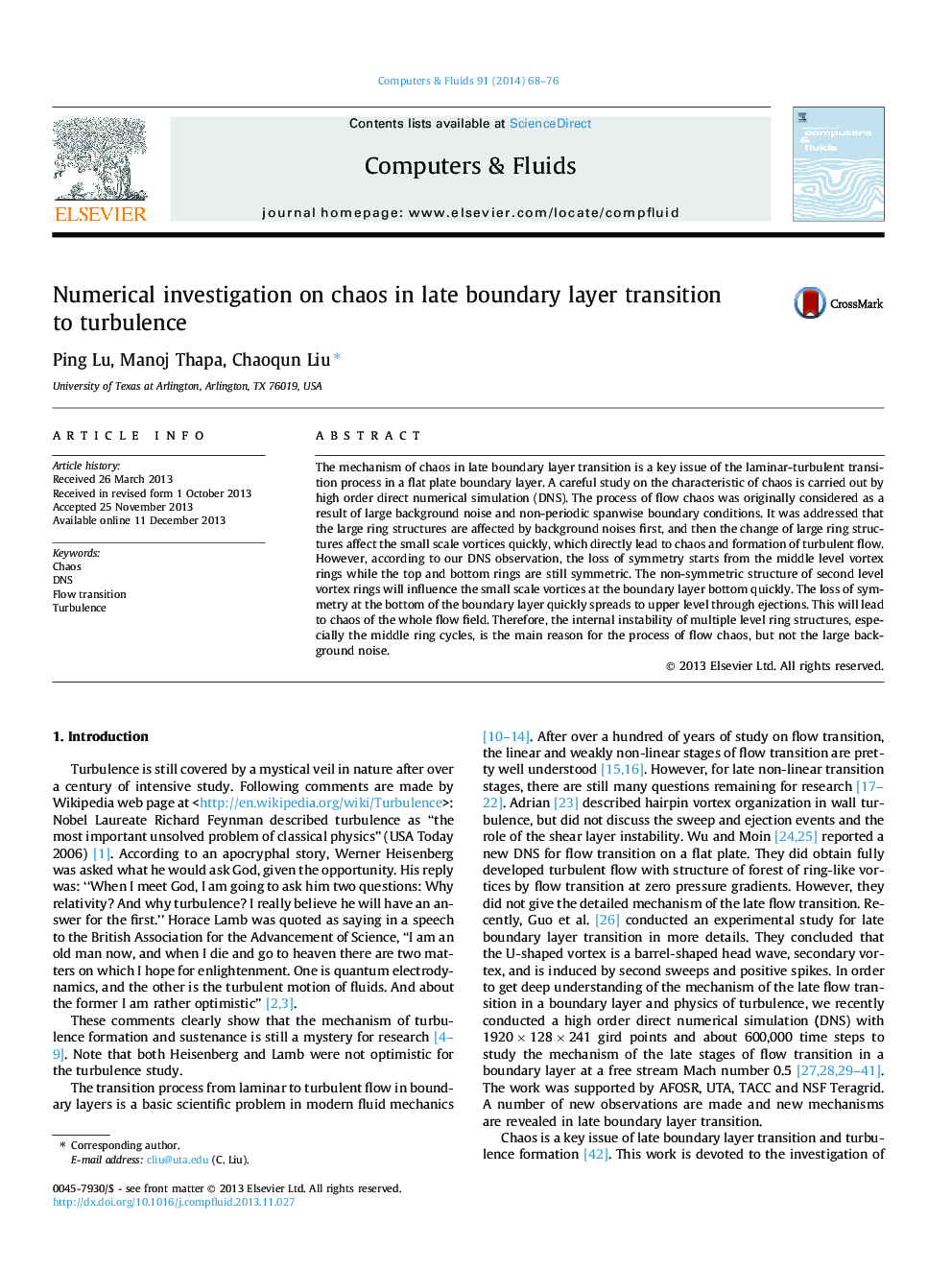| Article ID | Journal | Published Year | Pages | File Type |
|---|---|---|---|---|
| 768556 | Computers & Fluids | 2014 | 9 Pages |
•Loss of symmetry starts from the middle level vortex rings while top and bottom rings are symmetric.•The non-symmetric structure will influence the small length scales at the bottom quickly.•Loss of symmetry spreads to upper level through ejections and then the whole flow field.•The internal instability of multiple level ring structures is the main reason for flow chaos.
The mechanism of chaos in late boundary layer transition is a key issue of the laminar-turbulent transition process in a flat plate boundary layer. A careful study on the characteristic of chaos is carried out by high order direct numerical simulation (DNS). The process of flow chaos was originally considered as a result of large background noise and non-periodic spanwise boundary conditions. It was addressed that the large ring structures are affected by background noises first, and then the change of large ring structures affect the small scale vortices quickly, which directly lead to chaos and formation of turbulent flow. However, according to our DNS observation, the loss of symmetry starts from the middle level vortex rings while the top and bottom rings are still symmetric. The non-symmetric structure of second level vortex rings will influence the small scale vortices at the boundary layer bottom quickly. The loss of symmetry at the bottom of the boundary layer quickly spreads to upper level through ejections. This will lead to chaos of the whole flow field. Therefore, the internal instability of multiple level ring structures, especially the middle ring cycles, is the main reason for the process of flow chaos, but not the large background noise.
